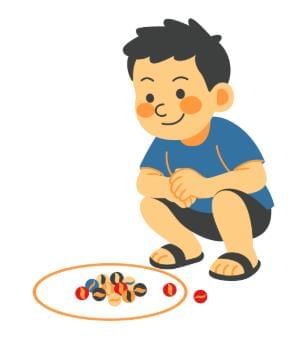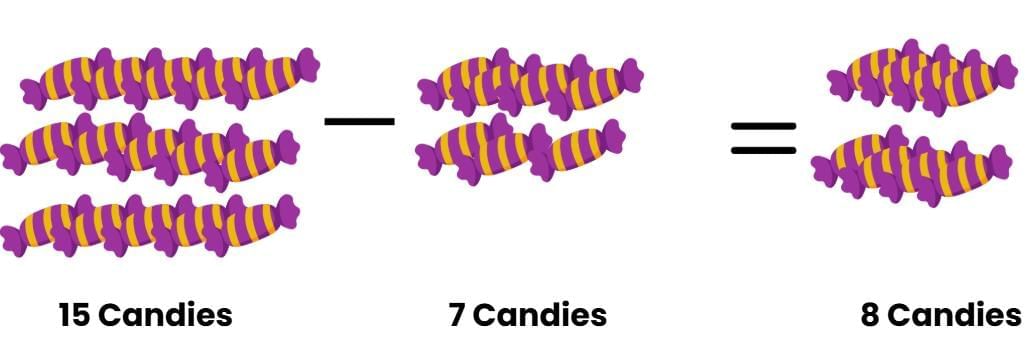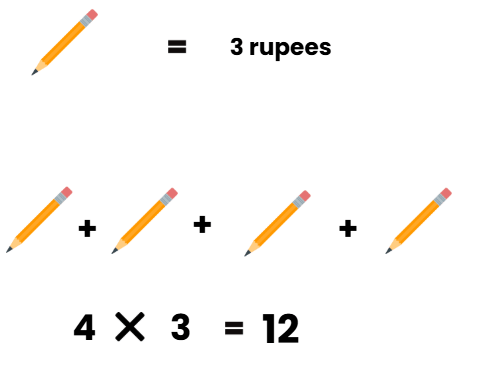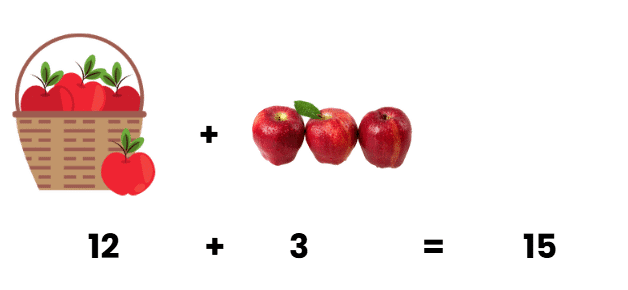Everyday Mathematics: Computing Operations | Mathematics Olympiad for Class 3 PDF Download
Q1. Rina has 15 candies. She gives 7 to her friend. How many candies does Rina have left?
(a) 8
(b) 10
(c) 7
(d) 5
Ans: (a) 8
Rina starts with 15 candies and gives away 7. To find out how many she has left, we subtract: 15 - 7 = 8.
So, Rina has 8 candies remaining.
Q2. A shop sells 1 pencil for 3 rupees. How much will 4 pencils cost?
(a) 9 rupees
(b) 12 rupees
(c) 7 rupees
(d) 15 rupees
Ans: (b) 12 rupees
If 1 pencil costs 3 rupees, then 4 pencils will cost 4 times as much. We multiply: 3 × 4 = 12.
So, 4 pencils cost 12 rupees.
Q3. Sam has 20 marbles. He wants to share them equally with his 4 friends. How many marbles does each friend get?
 (a) 4
(a) 4
(b) 5
(c) 6
(d) 8
Ans: (b) 5
To share 20 marbles equally among 4 friends, we divide: 20 ÷ 4 = 5. Each friend gets 5 marbles.
Q4. A fruit basket has 12 apples. If 3 more apples are added, how many apples are there in total?
(a) 14
(b) 15
(c) 9
(d) 16
Ans: (b) 15
The basket starts with 12 apples, and 3 more are added. We add: 12 + 3 = 15. So, there are 15 apples in total.
Q5. A pack of cookies has 10 cookies. If you eat 2 cookies every day, how many days will the pack last?
 (a) 3 days
(a) 3 days
(b) 4 days
(c) 5 days
(d) 6 days
Ans: (c) 5 days
The pack has 10 cookies, and you eat 2 each day. To find the number of days, divide: 10 ÷ 2 = 5. The pack lasts 5 days.
Q6. Tom has 25 rupees. He buys a juice for 10 rupees and a snack for 5 rupees. How much money does he have left?
(a) 10 rupees
(b) 12 rupees
(c) 15 rupees
(d) 20 rupees
Ans: (a) 10 rupees
Tom spends 10 rupees on juice and 5 rupees on a snack. Add the costs: 10 + 5 = 15. Then subtract from his total: 25 - 15 = 10. He has 10 rupees left.
Q7. Lila has 14 balloons. She gives half of them to her sister. How many balloons does Lila have left?
(a) 6
(b) 7
(c) 8
(d) 5 Ans: (b) 7
Ans: (b) 7
Half of 14 is found by dividing: 14 ÷ 2 = 7. Lila gives away 7 balloons, so she has 14 - 7 = 7 balloons left.
Q8. Ravi has 10 rupees. He buys 2 pencils. Each pencil costs 3 rupees. How much money does Ravi have left?
(a) 2 rupees
(b) 4 rupees
(c) 3 rupees
(d) 5 rupees
Ans: (a) 2 rupees
Ravi buys 2 pencils, each costing 3 rupees. The total cost is 3 × 2 = 6 rupees. Subtract from 10 rupees: 10 - 6 = 4 rupees. Ravi has 4 rupees left.
Q9. A toy costs 15 rupees. How many toys can you buy with 60 rupees?
(a) 3
(b) 4
(c) 5
(d) 6
Ans: (d) 4
60 ÷ 15 = 4. So, you can buy 4 toys with 60 rupees.
Q10. A school has 5 classrooms. Each classroom has 20 students. How many students are there in total?
(a) 100
(b) 90
(c) 110
(d) 120 Ans: (a) 100
Ans: (a) 100
5 × 20 = 100. So, there are 100 students in total.
|
36 videos|72 docs|49 tests
|
FAQs on Everyday Mathematics: Computing Operations - Mathematics Olympiad for Class 3
| 1. What are counting operations in mathematics for Class 3? |  |
| 2. How can I help my child practice counting operations at home? |  |
| 3. What are some fun activities to teach counting operations to Class 3 students? |  |
| 4. Why is it important for Class 3 students to master counting operations? |  |
| 5. What should I do if my child is struggling with counting operations? |  |



















